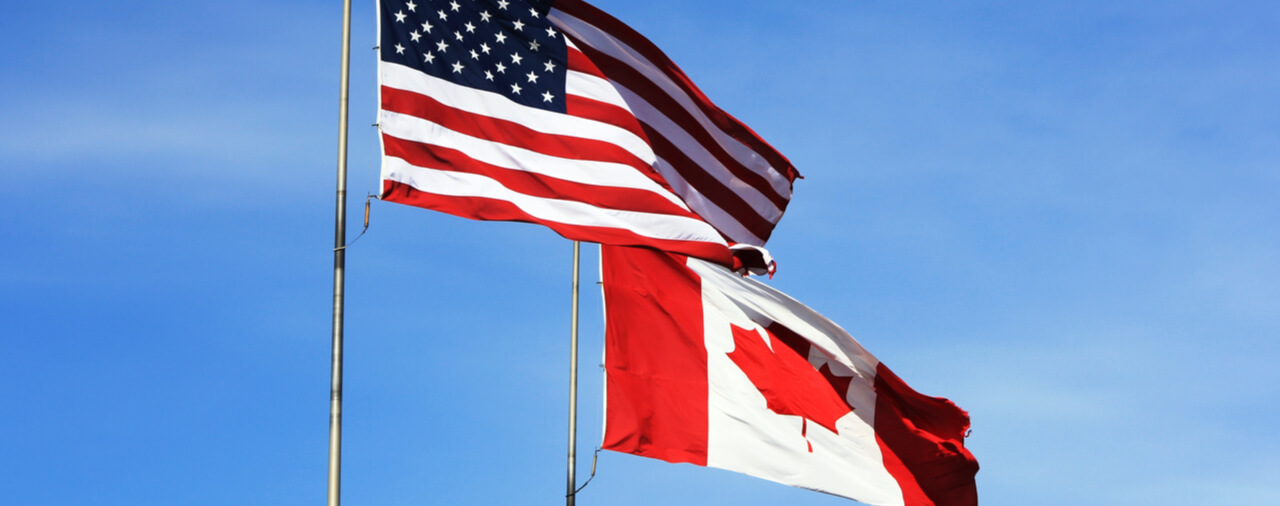- Introduction
- Update (Apr. 29, 2019)
- Update (Nov. 9, 2018)
- Participating in the Pilot Program
- The Pilot Program
- Conclusion
Introduction
On March 30, 2018, the United States Citizenship and Immigration Services (USCIS) published a news alert titled “USCIS and CBP to Implement Form I-129 Pilot Program for Canadian L-1 Nonimmigrants” [PDF version].
The news release announces that “the USCIS California Service Center (CSC) and the U.S. Customs and Border Protection (CBP) Blaine, Washington, port of entry (POE) will implement a joint agency pilot program for Canadian citizens seeking L1 nonimmigrant status under the North American Free Trade Agreement (NAFTA).” The pilot was originally scheduled to run from April 30, 2018, to October 31, 2018. However, it has since been extended through April 30, 2019 (see update, above).
In this article, we will examine the scope of the new Form I-129 pilot program for Canadian L1 nonimmigrants. To learn about filing an L1 petition in conjunction with an application for admission for Canadians under NAFTA, please see our full article on the subject [see article].
Update (Apr. 29, 2019)
The USCIS and CBP again extended pilot program for Canadian citizens seeking L-1 nonimmigrant status under the North American Free Trade Agreement (NAFTA) [PDF version]. The pilot program will now run through April 30, 2020.
Update (Nov. 9, 2018)
On October 31, 2018, the United States Citizenship and Immigration Services (USCIS) extended the Form I-129 Pilot Program for Canadian L-1 Nonimmigrants to April 30, 2019 [PDF version]. The program was initially slated to run from April 30, 2018, to October 31, 2018. We have updated the information in this article to reflect the extension.
Participating in the Pilot Program
In order to participate in the Form I-129 pilot program for Canadian L1 nonimmigrants, a petitioner will be asked to complete the following two steps.
First, the petitioner must submit the Form I-129 and supporting evidence to the CSC before the Canadian citizen seeks admission in L1 status through the Blaine POE.
Second, the petitioner will be asked to use a cover sheet annotated with “Canadian L” in order to ensure that the Form I-129 is quickly identified and for any quick correspondence thereafter. Such correspondence may include, when necessary, a request for evidence (RFE).
The USCIS made clear that petitioners may continue to file L1 petitions with the CBP on behalf of Canadian citizens seeking admission at the Blaine POE. The USCIS explained that in these cases, “CBP will accept the petition but will adjudicate it at the next Class A POE.”
About the Form I-129 Pilot Program for Canadian L1 Nonimmigrants
The USCIS explained that it will “receive fees, issue a Form I-797C receipt notice, and adjudicate the Form I-129” for those participating in the pilot. The USCIS will send an RFE where appropriate.
The CBP will make final determinations on whether Canadian L1 applicants participating in the pilot program are admissible to the United States. This is no different than non-pilot cases. The USCIS explained that Canadian L1 applicants participating in the pilot who are seeking immediate determinations of admissibility “must bring a copy of the petition approval notice for the Form I-129 when seeking admission to the United States at the Blaine POE.”
The USCIS explained that in cases where the petitioner sends the Canadian L1 applicant to the Blaine POE before the USCIS has made a decision on the Form I-129, the applicant may be delayed while the USCIS remotely adjudicates the Form I-129. In this case, the applicant must present a copy of the petition receipt notice for the Form I-129 and wait for it to be fully adjudicated by the USCIS.
A petitioner may send an L1 applicant to file the Form I-129 with the CBP at the Blaine POE without filing it in advance with the USCIS. In such cases, the CBP will adjudicate the Form I-129 at the nearest Class A POE. The Canadian L1 beneficiary may apply for admission at any POE optimized for processing L1 petitions for Canadian L1 beneficiaries. A petitioner can still have the CBP adjudicate an L1 petition for a Canadian L1 beneficiary at any CBP Class A POE or pre-clearance airport. The USCIS noted that the two closest Class A POEs to Blaine are Port Roberts, Washington, and Sumas, Washington. The closest pre-clearance airport is the Vancouver, Washington, PC.
The CBP and the USCIS encouraged petitioners participating in the Form I-129 Pilot Program for Canadian L1 Nonimmigrants to file their L1 petitions with the USCIS CSC “as far in advance of travel as possible.” Stakeholders in the program may communicate with the USCIS through the following email: [email protected]. The USCIS will seek feedback at the completion of the feedback before it considers extending the program concept to other POEs.
Conclusion
The new Form I-129 Pilot Program for Canadian L1 Nonimmigrants will test whether allowing L1 petitioners for Canadian L1 beneficiaries to file petitions in advance with the USCIS before seeking admission from the CBP will facilitate Canadian citizens seeking L1 status under NAFTA. Petitioners may consult with an experienced immigration attorney for guidance on the best way to pursue a nonimmigrant visa petition.





